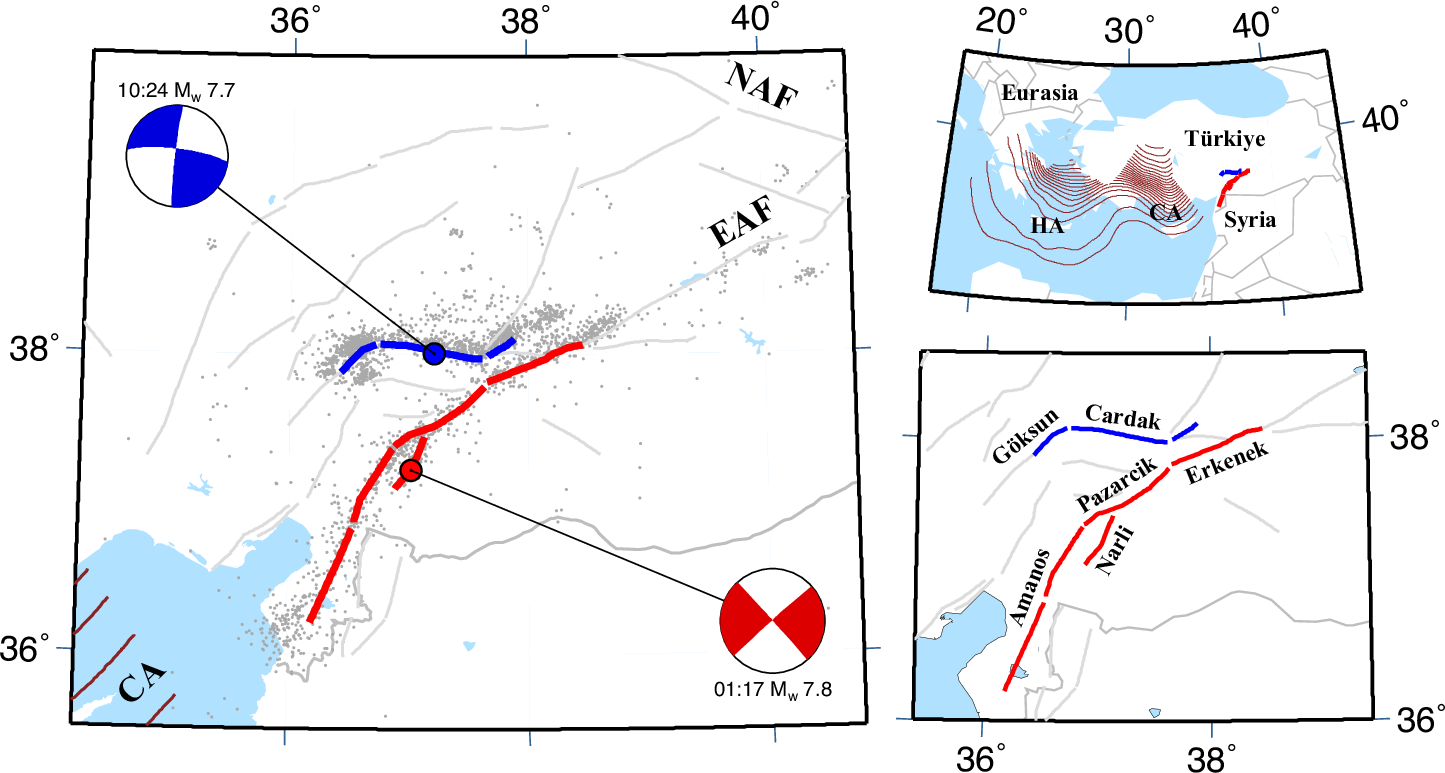2025-02-18 カリフォルニア大学サンディエゴ校 (UCSD)
<関連情報>
- https://today.ucsd.edu/story/scientists-get-a-step-closer-to-predicting-the-size-of-future-earthquakes
- https://www.nature.com/articles/s43247-024-01969-5
2023年に発生したMw7.8-7.7のカフラマンマラシュ地震は、ゆるやかにスリップ予測可能だった The 2023 Mw 7.8–7.7 Kahramanmaraş earthquakes were loosely slip-predictable
Ellis Vavra,Yuri Fialko,Fatih Bulut,Aslı Garagon,Sefa Yalvaç & Cenk Yaltırak
Communications Earth & Environment Published:05 February 2025
DOI:https://doi.org/10.1038/s43247-024-01969-5

Abstract
Understanding the behavior of large earthquakes over multiple seismic cycles is limited by short time spans of observations compared to recurrence intervals. Most of large instrumentally-recorded earthquakes have occurred on faults lacking well-documented histories of past events. The 2023 Mw 7.8–7.7 Kahramanmaraş earthquake doublet is exceptional as it ruptured multiple segments of the East Anatolian Fault (EAF) system, where historical records of devastating earthquakes span over two millennia. Here, we use historical earthquake records, measurements of interseismic deformation, and published slip models of the 2023 events to evaluate the recurrence patterns of large earthquakes. We compare slip deficit that accrued on each fault segment since the respective penultimate events to the average coseismic slip of the 2023 doublet. We find that the coseismic slip equaled to or exceeded the accumulated slip deficit, suggesting that the slip-predictable recurrence model applies as a lower bound on strain release during the Kahramanmaraş earthquakes.



